
Branded Dropshipping: Tips and Tricks
When it comes to starting an online store, the dropshipping business model is a simple and elegant solution. With its low barrier to entry, low overhead costs and simple set-up process, this fulfilment model has become a favourite of ecommerce entrepreneurs worldwide. Unfortunately, with popularity comes competition. As more suppliers and stores adopt the dropshipping model, it becomes harder for individual businesses to stand out.
Branded dropshipping helps stores leave their mark on the marketplace. While many dropshippers focus on selling low-cost, generic items without significant branding, branded dropshipping puts your branding front and centre at every touchpoint. In this blog, we’ll show you how branded dropshipping can elevate your business to the next level, and give you the tools to create a successful branded dropshipping business.
Why branded dropshipping in 2025?
Dropshipping appeals to many businesses because of the wide variety of affordable products. Stores can easily add and remove products according to demand, without the hassle of inventory management, bulk purchasing, or overstocking. But with so much on the market to choose from, it can be hard to differentiate between one brand and another, particularly if multiple retailers are using the same supplier.
Branded dropshipping takes your brand awareness one step further. It involves customising your products, packaging, labels and other marketing materials. When customers receive your branded products, they’ll know they came from your online store. More importantly, they’ll remember where to go for their next purchase.
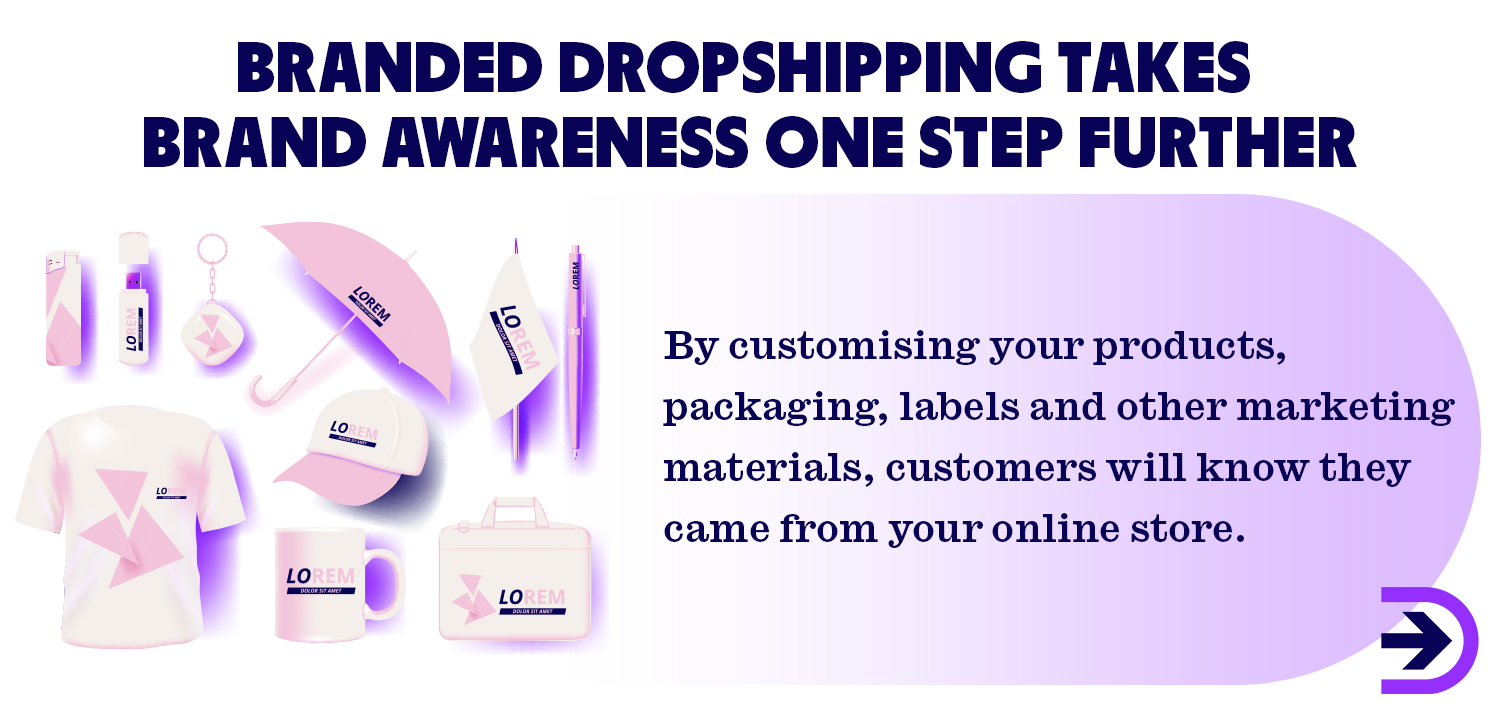
So, why should you invest in branded dropshipping in 2025?
Market saturation
As more suppliers embrace the dropshipping model, more and more products are being brought to market. You’ll always be able to find a trending product in your niche. Unfortunately, your competitors have the same idea. So do influencers, affiliate marketers, and even regular consumers that are excited to show off their purchases. Products that go viral can boost your profit margins, but there’s a high risk of market saturation. If you don’t get in early, you’ll have a hard time standing out against established competitors.
This is where branded dropshipping can help. Putting your own branded packaging on products turns them from generic trinkets to show-stoppers. You’re not just selling the same thing as everyone else: you’re selling your unique, expert brand experience. Even in a saturated market, this will make your product the first and most obvious choice for loyal customers.
Customer brand and loyalty
In traditional dropshipping, customers often receive generic products without noticeable branding. Suppose a customer has a forgettable shopping experience. In that case, they’re unlikely to remember who they purchased the product from in the first place, let alone develop any positive associations with the brand. Branded dropshipping ensures that every point of the customer journey, from discovery to delivery, is infused with the brand’s identity.
It’s no longer enough to be a faceless brand with a good product. In their 2024 Customer Loyalty Index report, SAP Emarsys found that 30 per cent of consumers were driven by ethical loyalty, meaning they stick with brands that align with their ethical values. Additionally, over 90 per cent of consumers say transparency by a brand is a key factor to their purchasing decisions. In 2025, customers expect brands to be open about their views and practices, particularly around sustainability, data collection and privacy.
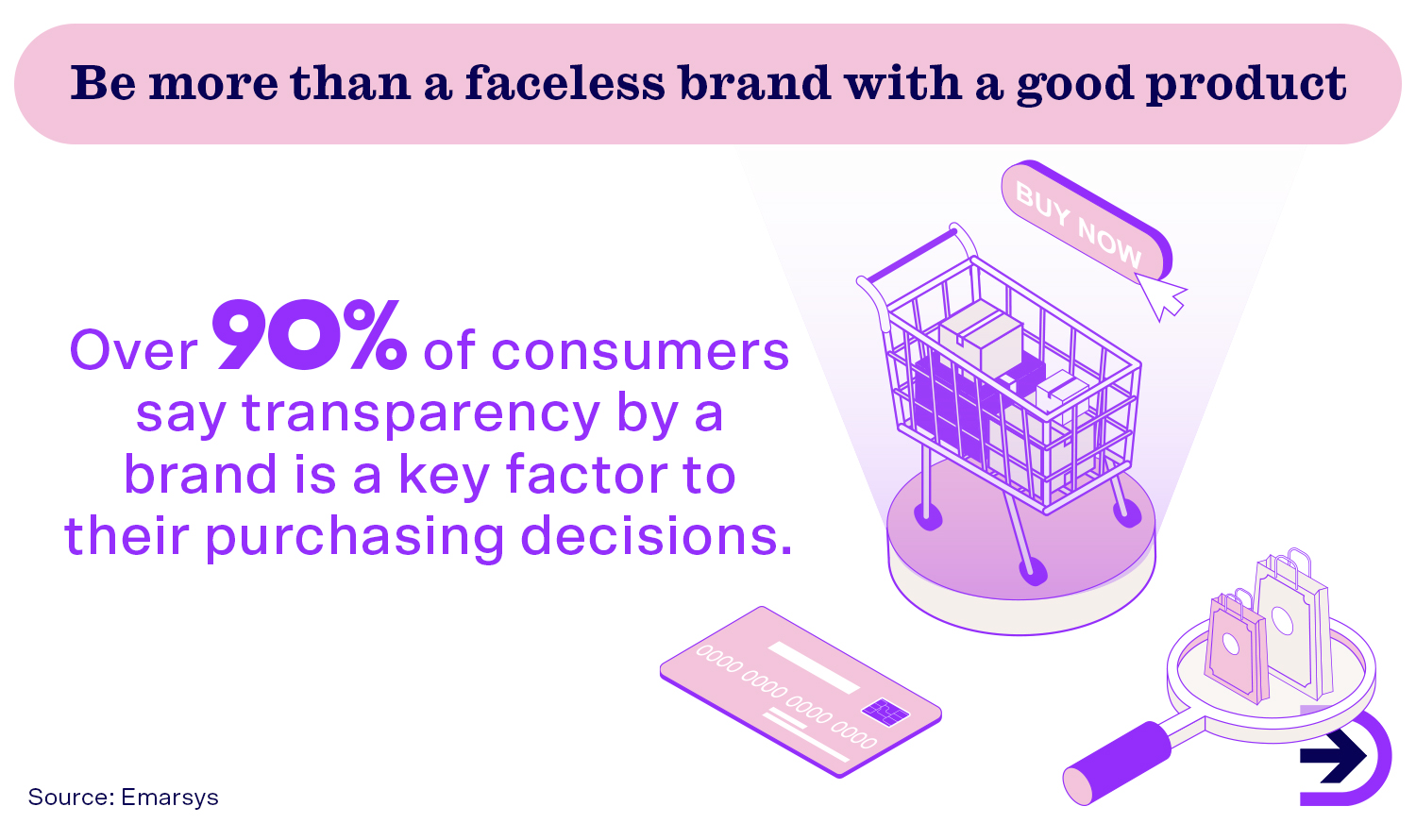
Brand transparency is conveyed through open communication, accessibility, and willingness to acknowledge mistakes. Branded dropshipping helps businesses achieve this by putting the brand front and centre at every stage of the buying journey, rather than hiding behind generic labels, plain packaging and mismatched shipping labels. Building a brand also involves maintaining consistency of brand voice across sales and social channels, owning customer reviews (both positive and negative) and focusing on positive customer experiences, all of which build the customer-brand relationship.
By building on these memorable and unique brand experiences, you’ll be able to boost customer conversions and build customer loyalty. You’ll also be at the forefront of their minds when they recommend products to family and friends.
Increased revenue
Why do customers prefer to buy brands? Because brands have higher perceived value. Great brands finely craft their image and take steps to build customer loyalty, whether by providing a high-quality product, solving a common pain point, or matching their customer’s values. Loyal customers will see these brands as valuable and go out of their way to buy them, even if it is at a higher price point. For these reasons, you can sell branded products at a higher price point, whether you’re dropshipping branded products or selling products under your own dropshipping brand.
Selling generic, unbranded products usually means competing on price. Using branded dropshipping, you’ll not only stand out from the competition, you’ll be above them. With a well-defined brand, you don’t have to undercut competitors, preserving your margins. This is especially important in the modern ecommerce landscape, where short trend cycles and dynamic pricing strategies force businesses to constantly adapt their pricing strategies.
Branded products can also increase your revenue over time by cutting other costs. A well-established brand benefits from organic traffic, referrals, and word-of-mouth marketing, reducing the need for expensive paid ads. Over time, this lowers customer acquisition costs while maintaining strong revenue.
Global market adaptation
The global ecommerce market is evolving at a rapid rate. Around 94 percent of consumers shopped online in 2024, and it’s estimated that ecommerce will drive 56 per cent of retail’s value growth in the next 5 years. Dropshipping has also come along for the ride, with the global dropshipping market value reaching 365.67 billion in 2024 and a projected compound annual growth rate (CAGR) of 22 per cent between 2025 and 2030. As dropshipping expands its reach, it will open up more opportunities for retailers to reach customers in different markets. As these markets grow, customers from different regions expect localised experiences. Owning your own branded dropshipping store allows you to tailor your marketing strategies, packaging, and even product variations to cater to different markets. Additionally, establishing a recognisable brand helps businesses expand internationally, gaining trust and traction in new regions without starting from scratch.
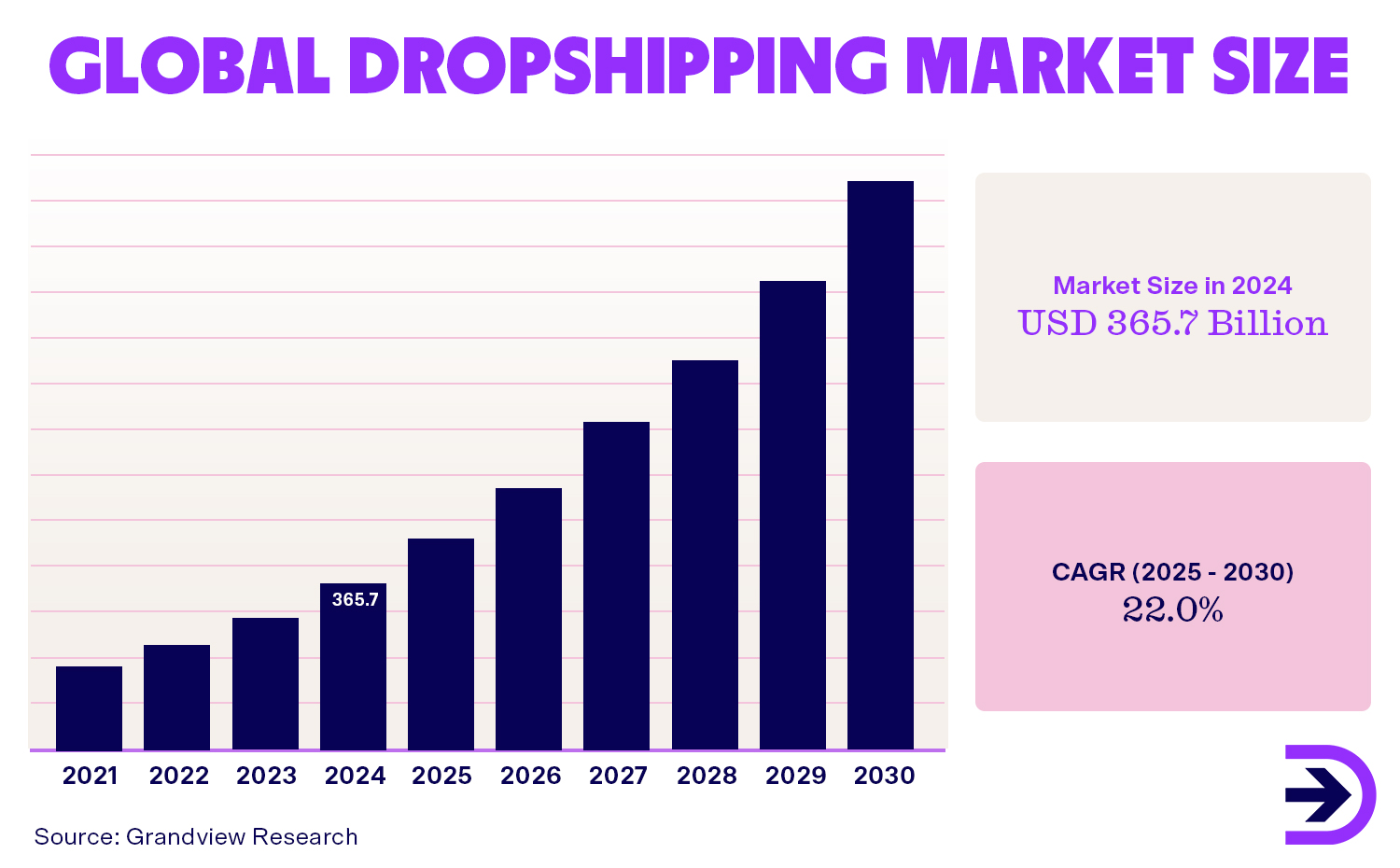
Technological advancements
With advancements in AI, automation, and digital marketing, the branded dropshipping business model has become easier to manage and scale. There are a myriad of ways AI assists branded dropshipping businesses:
-
Branded content creation: Generative AI can help businesses create all kinds of branded content, from brand logos to blog posts. Businesses can also train models on existing content or brand guidelines, ensuring all content is aligned with the brand’s tone, views, goals and target audience.
-
Product selection: AI and automation software can help businesses choose trending products that meet market demand. This helps businesses maintain a competitive product catalogue without long hours of manual research and development. Some platforms can even set dynamic pricing rules, automatically adapting product prices to reflect market trends.
-
Personalised marketing: AI can help businesses personalise their marketing at scale, ensuring every customer’s experience is not only enjoyable, but perfectly tailored to their exact needs.
-
Proactive customer service: AI-powered chatbots are reimagining customer service. Not only can these services offer 24/7 customer service, but advanced models are able to recognise emotional cues, detect customer intent and effort, and respond in an empathetic, emotionally intelligent way. This proactive approach significantly reduces churn and increases customer satisfaction while preserving your brand integrity.
-
Active feedback monitoring: Online reputation management is crucial for a brand's success in 2025. AI can help businesses manage brand narratives in real time by monitoring customer feedback, ratings, mentions, and other cross-channel interactions. This will allow businesses to respond to issues faster, identify and predict trends, and deliver strategic responses at the right time.
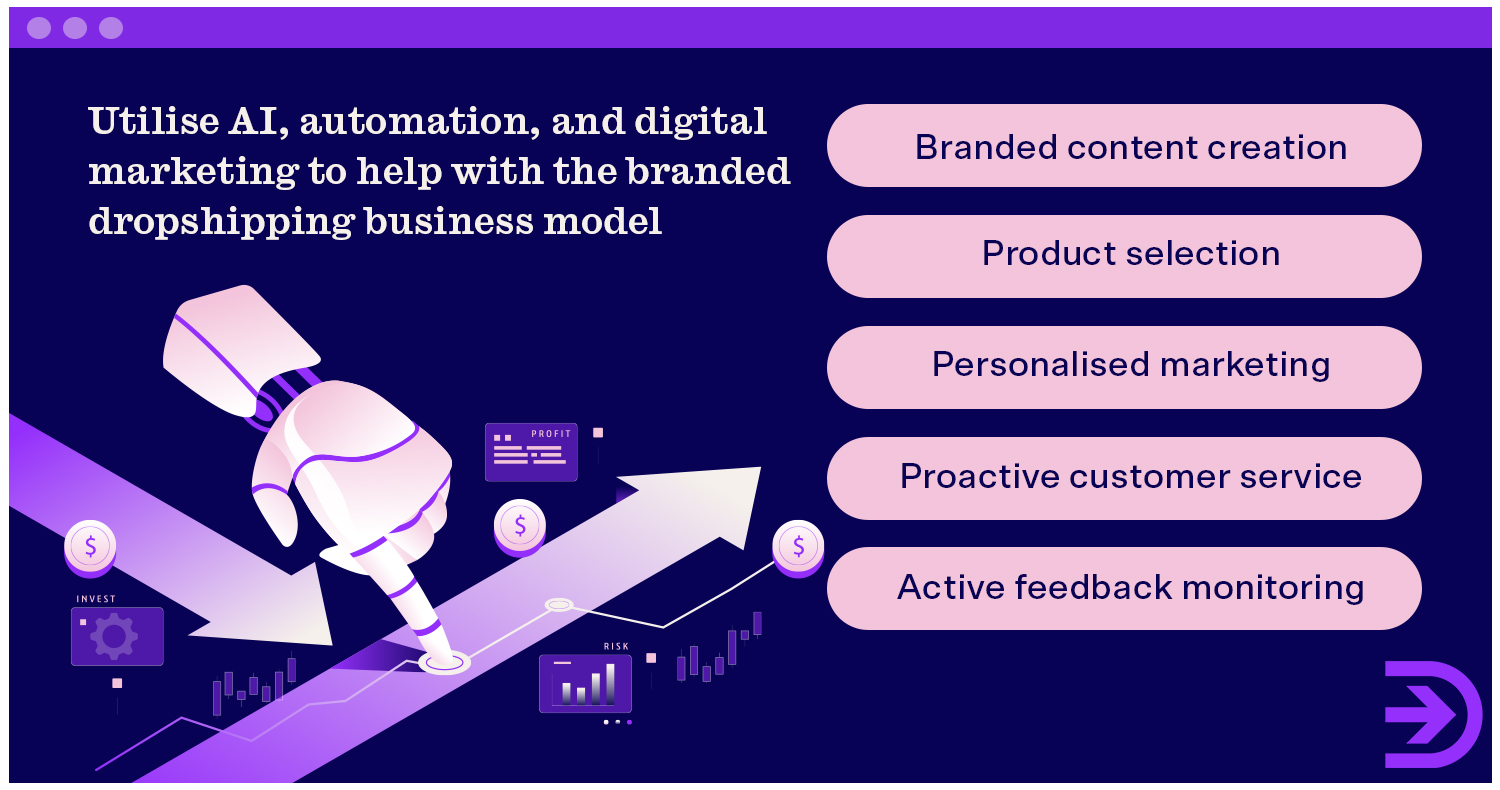
Sustainability and ethical sourcing
Customers are increasingly conscious of sustainability and ethical sourcing, with 77 per cent of customers stating it influences brand loyalty. Around 67 per cent of consumers are willing to pay more for products from companies with proven sustainability practices. This means that businesses that build sustainability into their brand identity and have the means to back it up will resonate with a growing cohort of environmentally conscious consumers. In a time where consumer trust is declining while global temperatures are rising, implementing sustainable practices may future-proof businesses while purely price-focused competitors will struggle to retain customer goodwill. In 2024, 34 per cent of consumers reported that they switched from a brand they were loyal to because of their sustainability practices.
Unlike generic dropshipping, where sellers have little control over product quality, branded dropshipping services allow businesses to partner with ethical manufacturers that meet sustainability standards. Businesses can choose suppliers that prioritise sustainable materials, such as recycled fabrics, biodegradable plastics, and ethically sourced raw materials. Custom branding means businesses can opt for minimalist, biodegradable, or recyclable packaging instead of wasteful, generic plastic packaging.
Additionally, unlike traditional retail models that produce goods in bulk (often leading to unsold inventory waste), branded dropshipping operates on a made-to-order model, minimising excess production. Businesses only order what they sell, reducing surplus stock that would otherwise contribute to landfill waste. Finally, branded dropshipping focuses on high-quality products that last longer than generic counterparts, keeping products out of landfill and contributing to a more circular economy.
Key Strategies for Implementing Branded Dropshipping in 2025
Selective supplier network
For successful branded dropshipping, it’s critical to work with the right suppliers to maintain brand quality and reliability. You’ll need to choose reliable suppliers that offer high-quality products, reliable shipping, and responsive customer service. Branded dropshippers also need suppliers with flexible and affordable customisation options.
Branded dropshipping suppliers can take many forms depending on the business model, product selection, and customisation level. Here are some key types:
Private label
In private label dropshipping, goods are manufactured by one company but sold under another company’s brand name. Private label retailers have full control over a product's specifications, branding and packaging. Many retailers also have exclusive contracts, meaning private label suppliers cannot sell your private label products to other retailers or competitors. Private label dropshipping is incredibly flexible, but this customisation and exclusivity comes at a higher cost than other forms of dropshipping.
Big box retailers often develop private-label product lines to reach different markets. Well-known product lines include Costco’s Kirkland Signature, Woolworth’s Homebrand/Select, and Amazon’s AmazonBasics.
Print on demand
In print-on-demand (POD) dropshipping, suppliers create generic products featuring the retailer's logo, artwork, or other designs. This type of dropshipping is often used for apparel, stationary, home decor or accessories. While these products are often generic, their branded designs turn them into a unique and valuable product. These designs usually belong to the retailer, meaning they cannot be sold by other merchants, though this may vary depending on the chosen platform. POD suits dropshipping brands that have a smaller budget but still want to create their own branded products.
Redbubble is a thriving example of POD dropshipping done well. Redbubble is an online marketplace where independent artists can upload their work and sell it on a variety of POD products such as shirts, bedding, mugs, rugs and more. The platform helps small and upcoming artists sell artwork or merchandise with minimal investment and hassle.
Reselling
Dropshipping branded products (instead of your own) is another way to engage with branded dropshipping. This can be lucrative in luxury markets, where second-hand, dead-stock or out-of-season branded items can be sold by resellers at a reduced wholesale price. By selling these goods, you can leverage existing brand loyalty to build brand awareness, establishing your business as a one-stop shop for your niche.
If you’re going this route, you’ll need to find genuine, established resellers. Does the reseller have permission from the brand owners to sell these products? Are the products genuine, or are they replicas? Can this company produce certificates of authenticity if asked? What are their return and refund policies? Do they have safe shipping practices? These are all questions you’ll need to ask before signing on with a reseller.
Luxury fashion boutique Cettire uses this model. By establishing strong relationships with big fashion houses such as Balenciaga, Jimmy Choo and Prada, Cettire is able to sell premium designer products at a significant discount to regular consumers. On top of their incredible product quality, they have mastered the art of seamless online retail, focusing on delivering a boutique customer experience from the comfort of online.
Finding the right supplier takes time, but it is essential. Establishing strong relationships with trusted manufacturers and suppliers can lead to better pricing, faster fulfilment, and greater control over branding elements.
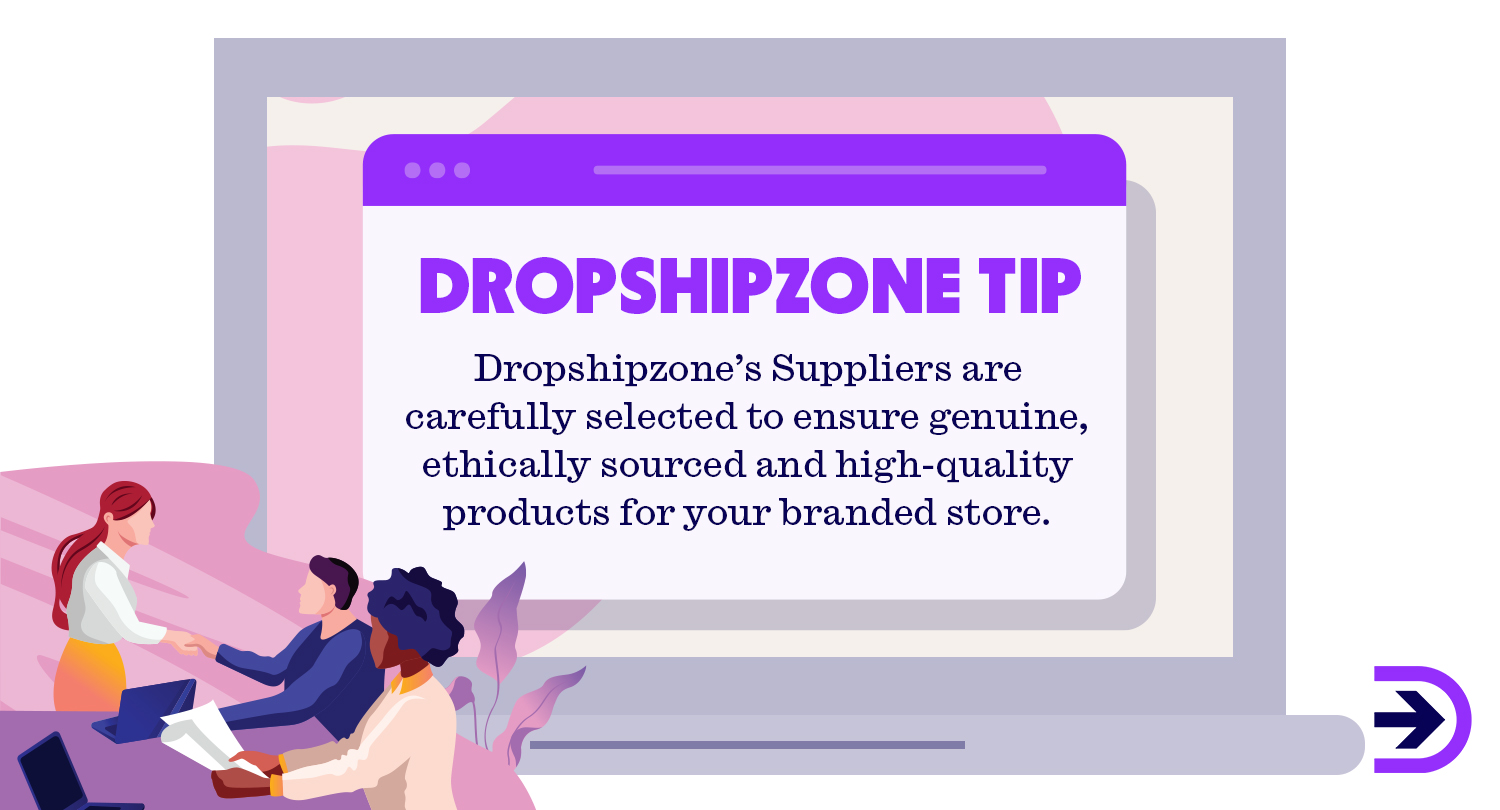
Dropshipzone expert tip: Dropshipzone’s Suppliers are carefully selected to ensure genuine, ethically sourced and high-quality products for your branded store. Sign up today and you’ll receive instant access to our full catalogue of products, saving you hours of research and negotiations.
Focused branding efforts
It’s not enough to create a branded dropshipping store and put it into the world. Brand consistency is the key to standing out in the competitive ecommerce marketplace. A well-developed brand identity builds trust with customers and creates a lasting impression.
Here are some of the steps you may take to develop a strong brand identity:
-
Create a unique logo: Your logo is the strongest first impression you will make on potential customers, which is why it should be your first priority. It’s the foundation of your brand identity, which means it needs to represent your business as a whole, not just rely on today’s trending designs. A good logo is eye-catching, memorable, timeless and above all, legible. If you’re new to logo design, you can use AI tools, design tools such as Canva, or gig platforms such as Upwork or Airtasker to outsource your logo design.
-
Invest in customised packaging: Speaking of first impressions, your packaging is another important consideration. Unboxing has become an event in and of itself, with over 65 per cent of consumers saying they are more likely to share a product image on social media if it comes in unique or gift-like packaging. There’s also the practical side of packaging - approximately 50 per cent of customers report receiving damaged products due to inadequate packaging, leading to negative reviews and returns. Customised packaging can increase your perceived brand value, leading to more satisfied customers. With AI-driven design tools and the right supplier, it’s easier than you think to create the perfect package.
-
Create a compelling brand story: Creating a compelling brand story is essential for establishing an emotional connection with customers and differentiating your business in a crowded market. A strong brand story should clearly communicate your mission, values, and the problem your product solves, while also resonating with your target audience’s emotions and aspirations. It should be authentic, engaging, and consistent across all marketing channels, from your website to social media and packaging. A well-crafted brand story builds trust, loyalty, and relatability, making customers more likely to choose your brand over competitors.
-
Use high-quality visuals: Since online shoppers can't physically touch or try products, clear, professional images and videos help showcase product details, quality, and branding. Lifestyle photos and 360-degree views enhance the shopping experience, making products feel more tangible and desirable. Additionally, branded visuals (such as custom packaging and logo placement) reinforce brand identity and differentiate products from competitors.
-
Create brand guidelines: Creating brand guidelines is essential for maintaining a consistent and professional brand identity across all customer touchpoints. Brand guidelines define key elements such as logo usage, colour schemes, typography, packaging design, and tone of voice, ensuring that every aspect of the business aligns with the brand’s image. Consistency builds trust and recognition, making customers more likely to remember and engage with the brand. It also streamlines marketing efforts, helping you create cohesive content across websites, social media, and advertisements.
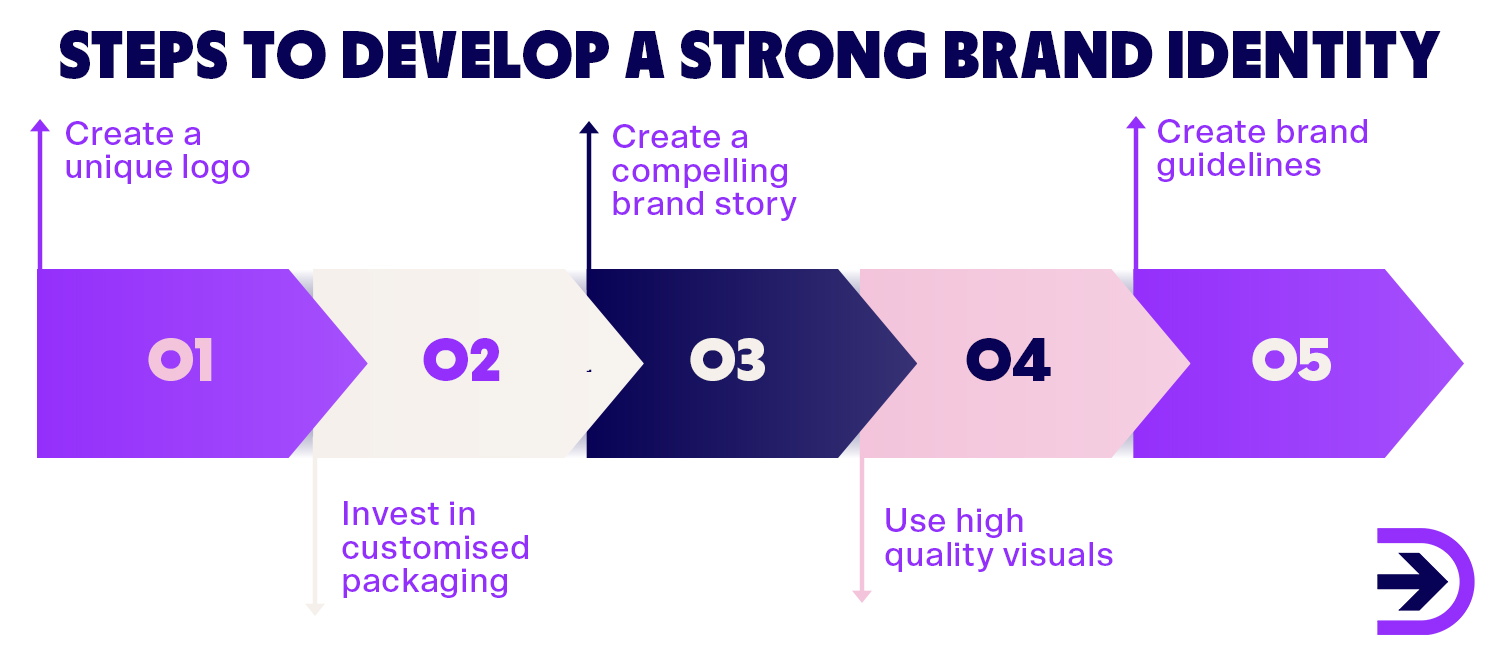
Social media community building
One of the best ways to promote your branded dropshipping store is using social media. By consistently sharing valuable content, interacting with followers, and showcasing the brand’s story, businesses can build trust, credibility, and emotional connections with their audience. A thriving community on social media platforms encourages word-of-mouth marketing, as happy customers are more likely to share their experiences, recommend products, and create user-generated content - all of which amplify brand recognition.
Beyond engagement, a well-established social media community provides valuable insights into customer preferences, pain points, and trends. Brands can leverage these insights to tailor their marketing efforts, improve products, and develop targeted campaigns that resonate with their audience. Platforms like Instagram, TikTok, and Facebook allow businesses to interact directly with customers, respond to enquiries, and create exclusive groups for brand advocates. This sense of belonging boosts customer loyalty and lifetime value, ultimately leading to higher conversion rates and long-term profitability in the branded dropshipping space.
Finally, partnering with influencers is essential for social media community building, particularly if you’re looking for speed and scalability. It’s estimated that 77 per cent of Gen Z and 50 per cent of Millennials follow influencers on social media, and a whopping 92 per cent of users are likely to act on influencer recommendations. These strategies have significant ROI, with businesses earning as high as $5.78 for each dollar spent on influencer marketing. It’s no surprise that 86 per cent of US marketers will partner with influencers in 2025, and 26 per cent of marketing agencies and brands allocate up to 40 per cent of their budget to influencer marketing.
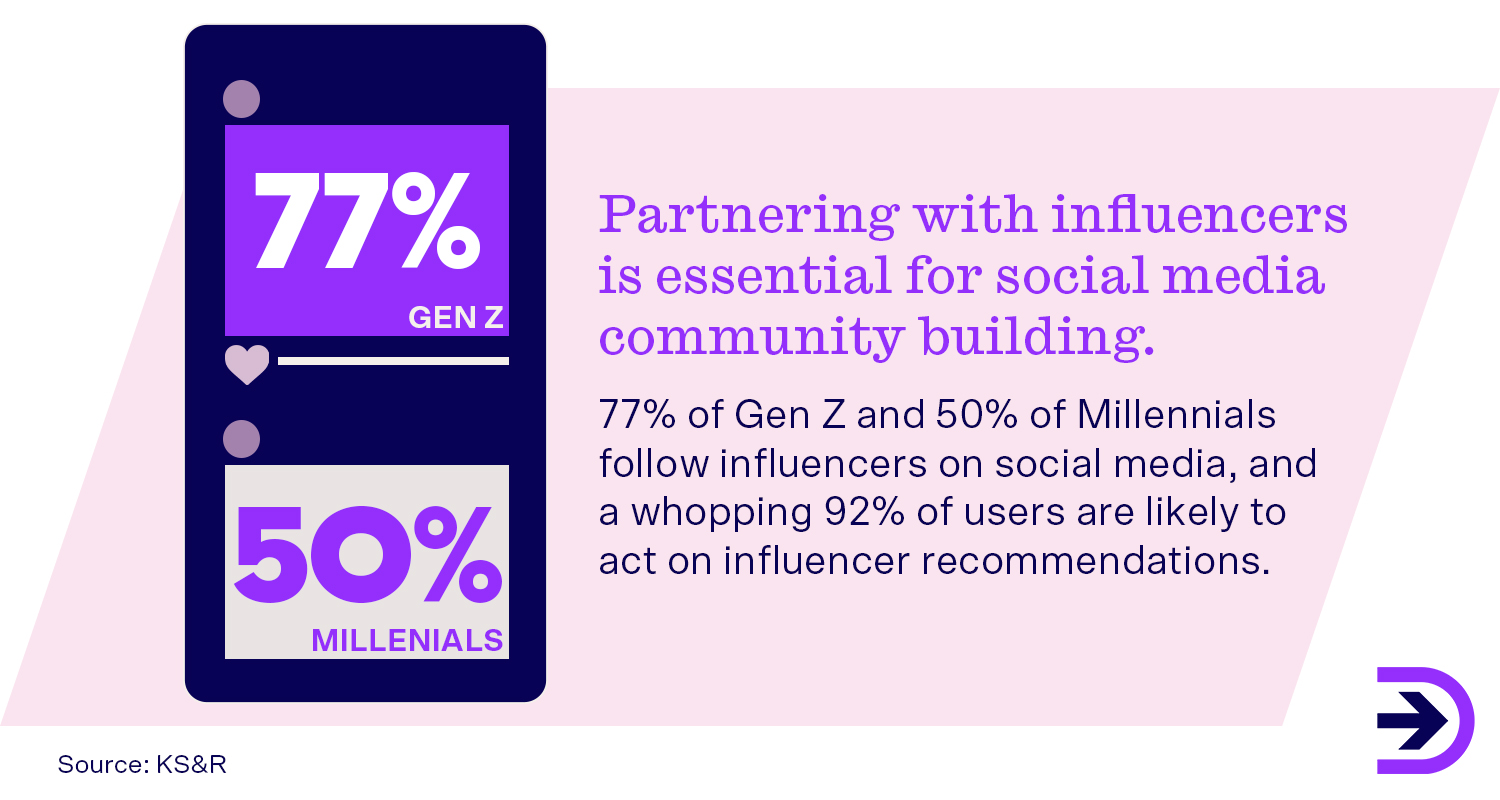
While influencer marketing may seem daunting and expensive, there are plenty of cost-effective solutions. For starters, micro- and nano-influencers (accounts with less than 75 followers) offer lower rates with just as effective conversions. User-generated content (UGC) campaigns are another way to maximise your reach by essentially outsourcing content creation to your audience and other influencers.
Proactive customer support
One of the best ways for dropshipping businesses to stand out from the competition is to provide exceptional customer service. Quick response times, transparent communication, and problem resolution contribute to a positive shopping experience. A positive shopping experience builds trust and boosts your brand loyalty.
There are many ways you can create a fantastic customer experience, even if you’re running your dropshipping business alone. 71 per cent of B2C and 86 per cent of B2B customers already expect businesses to be well-informed of their preferences and past interactions (2025 CX Trends Report, InMoment). If you have the resources, a responsive and dedicated support team will ensure customers feel valued and supported. You may also want to invest in a robust customer relationship management (CRM) system such as Zoho, Hubspot or Salesforce. These systems can help consolidate your customer data and act as a universal support hub for your team.
For additional support or after hours enquiries, live chatbots and other AI-supported services can handle simple enquiries, answer common questions, or direct customers to more specific assistance.
Targeting specific niche markets
Targeting specific niche markets is crucial for branded dropshipping because it allows businesses to stand out in a competitive market, attract highly engaged customers, and build strong brand loyalty. Instead of trying to appeal to a broad audience, focusing on a niche enables brands to tailor their messaging, product selection, and marketing strategies to meet the unique needs and preferences of a specific group. This targeted approach leads to higher conversion rates, better customer retention, and reduced competition, as niche markets often have fewer sellers but a dedicated customer base willing to pay premium prices for specialised products.
Additionally, niche markets make it easier to build a strong brand identity and establish authority within a specific industry. When a brand positions itself as an expert in a particular niche - whether it’s eco-friendly pet products, high-performance fitness gear, or luxury home decor - it fosters trust and credibility among consumers. This trust translates into repeat purchases, word-of-mouth referrals, and long-term brand growth, making niche targeting a powerful strategy for success in branded dropshipping. It also makes it easier for brands to partner with influencers and affiliate marketers, who often work within specific niches.
To choose your ideal niche, conduct market research to identify possible niches with strong demand and minimal competition. Popular niches for 2025 include:
-
Sustainable products.
-
Pet accessories.
-
Fitness and weight loss.
-
Home office.
-
Gaming and esports.
-
Home improvement/DIY.
-
Tech accessories.
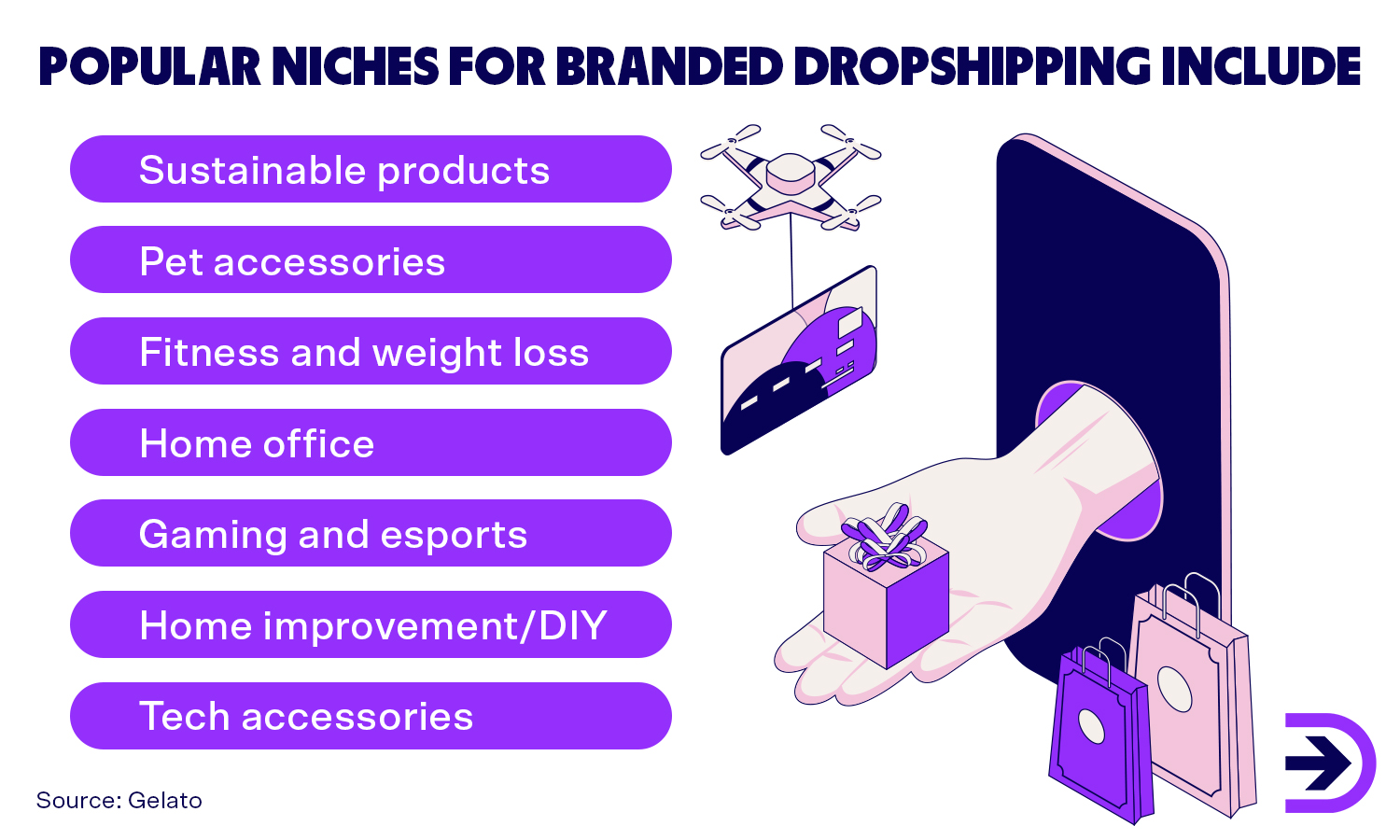
Summary
Is branded dropshipping the future of ecommerce? We think so. As market competition increases, businesses must differentiate themselves by building strong brands that foster customer loyalty and trust. For dropshipping businesses, branded dropshipping is a cost-effective solution that creates a unique customer experience with the added benefits of regular dropshipping - no inventory management, lower starting investment, and no logistics management. Entrepreneurs looking to thrive in the ecommerce space should focus on branding and implement strategic approaches to stay ahead of the competition and achieve long-term success.

